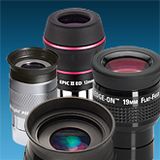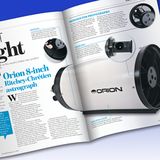
An eyepiece with an illuminated reticle (crosshair or grid) has many uses for the astronomer.
It's a necessity for long-exposure astrophotography, where it is used in conjunction with a guide scope or off-axis guider to hold a guide star in a fixed position, to prevent star trailing on the film.
It is useful for polar-aligning an equatorially mounted telescope, because it shows the exact center of the telescope's field of view. Most polar-alignment procedures require centering Polaris or another star in the field of view.
An illuminated reticle eyepiece can be helpful in collimating of a telescope, where the image of a star must be kept centered to accurately judge the alignment of the primary and secondary mirrors.
A calibrated grid or bull's-eye is handy for measuring the apparent size of an object or the angular separation between double-star components. It also helps in pointing out objects to inexperienced observers, such as at public demonstrations or star parties.
The crosshairs in an illuminated reticle eyepiece are usually etched on a thin, flat optical window located at the eyepiece's focal plane. A built-in diopter mechanism allows the reticle to be focused. An illumination source positioned at the edge of the etched window lights up the reticle.
The best illumination source is a red light-emitting diode, or LED. It consumes much less power than an incandescent bulb, and the red light helps preserve your eyes? dark adaptation. Most illuminated reticle eyepieces available today are wireless, powered by tiny internal batteries, usually type SR-44. Other models, however, can be plugged into an external battery pack or a telescope?s drive corrector or power panel. While the dangling wire is less convenient, you won't have to worry about batteries dying in the middle of a photographic session.
Illuminated reticle eyepieces generally come in Kellner, Orthoscopic, or Plossl designs. Of these, Plossls have the largest-diameter eye lens and the longest eye relief, for more comfortable viewing. Typical focal lengths are 9mm and 12.5mm; higher powers can be achieved by attaching a barlow lens.


















